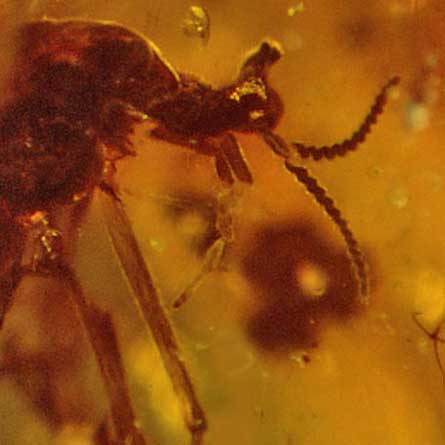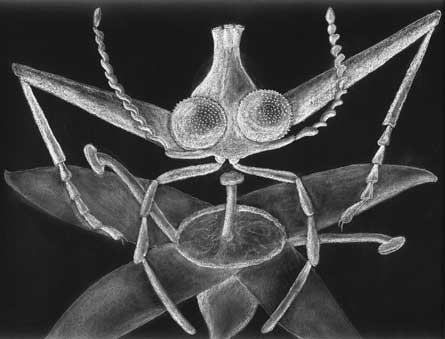- More than 2 years ago
Dinosaurs weren’t the only critters with spikes and horns to roam the Earth during the Cretaceous. Scientists have found a tiny fly with a three-pronged horn and spiky eyes preserved in a chunk of amber dating to roughly 100 million years ago. The fly has been named Cascoplecia insolitis (Casco meaning old and insolitis for strange, unusual) and is so bizarre that that it has been assigned to a new insect family, reports George Poinar, Jr. of Oregon State University in Corvallis.


Many insects, flies included, that have compound eyes also have three additional, simple eyes that sit atop their head. These simple eyes, known as ocelli, are thought to help insects keep their bearings during flight. In the newly discovered fly, the ocelli sit at the ends of each of the horn’s three prongs. The eyes may have helped this “unicorn fly” detect approaching enemies as it crawled the surfaces of flowers looking for pollen, Poinar speculates.
Each small unit of the fly’s larger compound eyes spikes outward, rather than lying flat. Perhaps the spiked surface prevented pollen from sticking to the compound eye, notes Poinar. Pollen from two different plant species was also preserved with the specimen, which was found in an amber deposit in Burma.
The fly has tiny jaws, probably suitable only for munching pollen, unusually long legs and spiraled antennae. Photographs and a description of the specimen will appear in an upcoming issue of Cretaceous Research.






